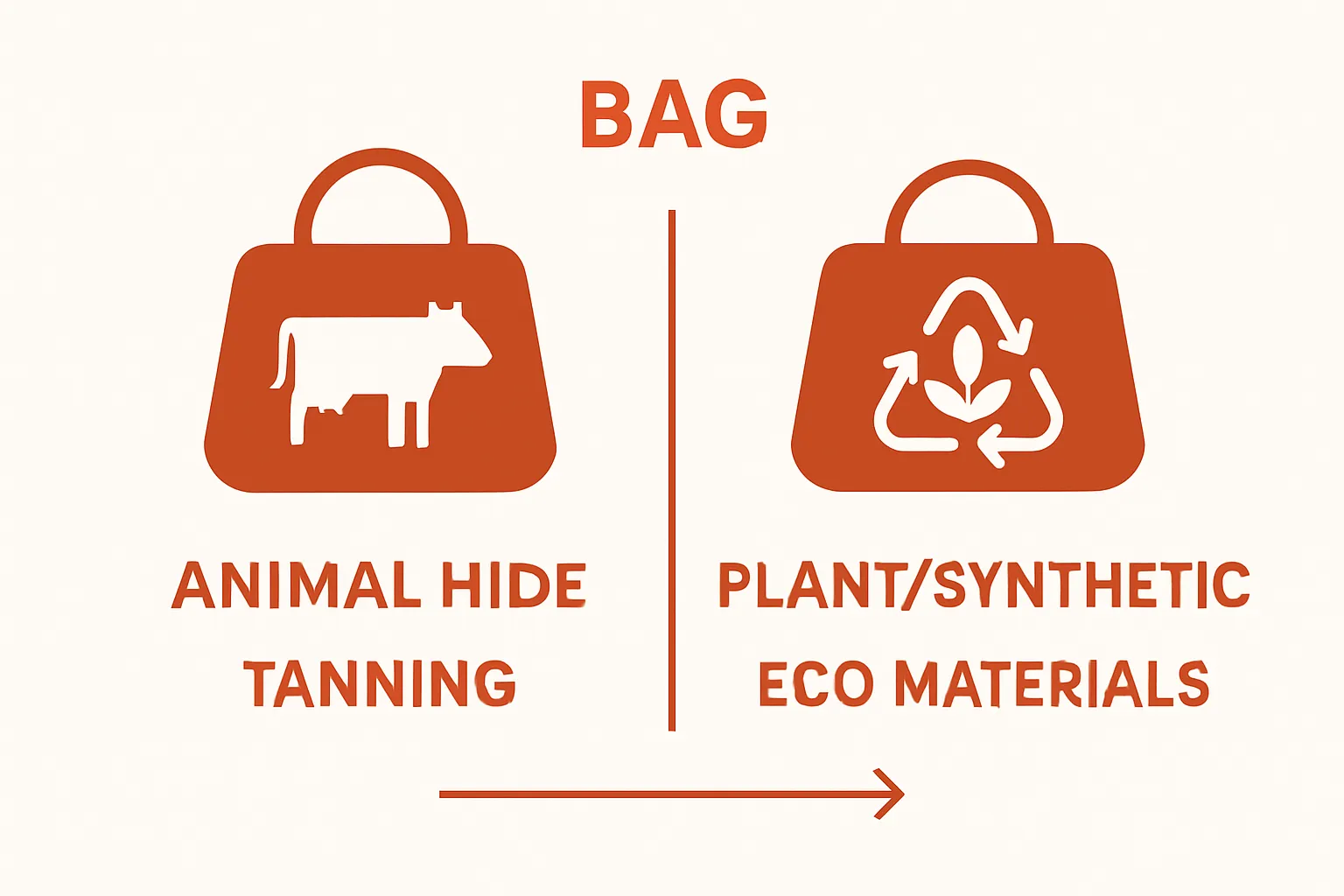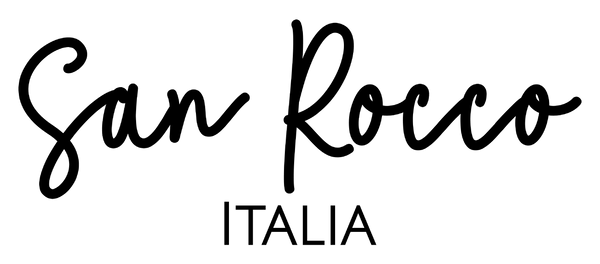
Understanding Leather Bags vs Vegan Bags: Key Differences
Share
Choosing between leather and vegan bags means deciding not just what carries your essentials but what carries your values. Half the world still picks leather for its classic style, yet global vegan leather sales are rising by more than 40 percent every year. It sounds like tradition should win but modern materials are rewriting the rulebook and giving everyone something surprising to consider.
Table of Contents
- What Are Leather Bags And Vegan Bags?
- Why Choose Between Leather And Vegan Options?
- Materials And Production: How Do They Differ?
- Aesthetics And Longevity: The Visual Appeal Of Each
- Ethical And Environmental Considerations In Fashion
Quick Summary
| Takeaway | Explanation |
|---|---|
| Leather bags offer natural durability | Crafted from animal hide, leather bags develop a unique patina and can last decades with proper care. |
| Vegan bags emphasise ethical fashion | Made without animal products, these bags cater to environmentally conscious consumers prioritising sustainability and animal welfare. |
| Material advancements improve vegan durability | Technological innovations have led to high-quality synthetic and plant-based materials that closely match leather’s resilience and aesthetic appeal. |
| Personal style reflects consumer values | The choice between leather and vegan options is influenced by individual ethics, aesthetics, and lifestyle preferences, allowing for unique self-expression. |
What are Leather Bags and Vegan Bags?
Leather and vegan bags represent two distinct approaches to accessory design, each with unique characteristics and philosophical underpinnings. Understanding their fundamental differences helps consumers make informed purchasing decisions that align with personal values and style preferences.
The Traditional Leather Bag
Leather bags are crafted from animal hide, traditionally sourced from cattle, sheep, or goats. Oxford Reference defines these accessories as products made through a complex process of treating and transforming animal skin into a durable, flexible material. The leather production process involves several critical stages:
- Selecting high-quality animal hide
- Tanning the hide to prevent decomposition
- Treating the material to enhance durability and texture
- Crafting the bag using specialised leather working techniques
Traditional leather bags are prized for their natural durability, classic aesthetic, and ability to develop a unique patina over time. Skilled artisans often invest significant time in creating each piece, ensuring exceptional quality and longevity.
Vegan Bags: A Modern Alternative
Vegan bags represent a contemporary approach to accessory design that completely eliminates animal-derived materials. These alternatives are crafted using synthetic or plant-based materials designed to mimic leather’s aesthetic and functional qualities. Key characteristics include:
- Manufacturing without any animal products
- Using materials like polyurethane, recycled plastics, or innovative plant-based textiles
- Focusing on ethical and environmental sustainability
The rise of vegan bags reflects growing consumer consciousness about animal welfare and environmental impact. These accessories offer style-conscious individuals an opportunity to express their values through their fashion choices while maintaining a sophisticated aesthetic.
Whether choosing traditional leather or innovative vegan alternatives, modern consumers have unprecedented options for expressing personal style and ethical commitments through their accessories.
Below is a comparison table highlighting the key differences between traditional leather bags and vegan bags, focusing on their defining characteristics, production methods, and ethical or environmental implications.
| Feature | Traditional Leather Bags | Vegan Bags (Synthetic/Plant-Based) |
|---|---|---|
| Source Material | Animal hide (usually cattle, sheep, goats) | Synthetic (PU, recycled plastics) or plant-based textiles |
| Production Process | Tanning, chemical treatment, artisanal craftsmanship | Advanced polymer technology, sustainable manufacturing |
| Durability | Naturally durable, can last decades with care | High-quality modern variants offer comparable resilience |
| Aesthetic Qualities | Develops unique patina, classic and timeless look | Vast range of colours & textures, contemporary design options |
| Animal Welfare | Involves animal exploitation and slaughter | Manufactured without animal products or by-products |
| Environmental Impact | High water use and chemical treatments | Lower animal impact, but some synthetic variants have drawbacks |
| Style Expression | Traditional, heritage-focused | Ethical, environmentally conscious, modern style flexibility |
Why Choose Between Leather and Vegan Options?
The decision between leather and vegan bags extends far beyond mere aesthetics, encompassing complex considerations of personal ethics, environmental impact, durability, and individual lifestyle preferences. Understanding the nuanced factors driving this choice helps consumers make informed purchasing decisions aligned with their values and practical requirements.
Ethical and Environmental Considerations
Modern consumers increasingly recognise the profound implications of their purchasing choices. According to Sustainable Fashion Academy, fashion choices directly impact environmental and animal welfare systems. Key ethical considerations include:
- Animal welfare implications of traditional leather production
- Carbon footprint associated with different manufacturing processes
- Long term environmental sustainability of material choices
Vegan alternatives offer a pathway for individuals committed to minimising animal exploitation while maintaining high fashion standards. By selecting materials that do not involve animal suffering, consumers can make a meaningful statement about their personal values.
Performance and Durability Factors
The performance characteristics of leather and vegan bags differ significantly. Traditional leather typically offers exceptional durability, developing a rich patina and potentially lasting decades with proper care. Vegan alternatives, while historically considered less robust, have seen remarkable technological advancements in material science.
Modern synthetic and plant-based materials now compete closely with leather in terms of:
- Structural integrity
- Water resistance
- Aesthetic appeal
- Maintenance requirements
Personal Style and Individual Expression
Ultimately, the choice between leather and vegan bags represents a deeply personal decision reflecting individual aesthetic preferences, ethical commitments, and lifestyle needs. Whether prioritising traditional craftsmanship or innovative sustainable design, consumers can find sophisticated options that authentically represent their unique identity and values.
The contemporary accessories market celebrates diversity, offering elegant solutions for every discerning individual seeking both style and substance in their fashion choices.
Materials and Production: How Do They Differ?
The manufacturing processes for leather and vegan bags represent fundamentally different approaches to material sourcing, production techniques, and environmental considerations.
Understanding these nuanced differences provides insight into the complex world of accessory manufacturing.

Traditional Leather Production Processes
Traditional leather production involves an intricate series of stages transforming raw animal hide into a usable material. Food and Agriculture Organization highlights the comprehensive nature of leather manufacturing, which includes multiple critical steps:
- Animal hide selection and initial preparation
- Chemical treatment and tanning processes
- Complex preservation and finishing techniques
- Specialised craftsmanship for final product creation
The leather production process requires significant environmental resources, including substantial water consumption and potential chemical treatments. Skilled artisans invest considerable time and expertise in transforming raw materials into high-quality leather products.
Vegan Material Manufacturing
Vegan bag production represents a technological approach to material creation, focusing on synthetic and plant-based alternatives. These materials are engineered to provide similar aesthetic and functional qualities to traditional leather while minimising environmental impact. Key manufacturing strategies include:
- Developing synthetic materials from recycled plastics
- Creating innovative plant-based textiles
- Utilising advanced polymer technologies
- Implementing sustainable production methodologies
Technological innovation plays a crucial role in vegan material development, with manufacturers continuously exploring more sustainable and high-performance alternatives to traditional leather.
Sustainability and Technological Evolution
Both leather and vegan bag production are experiencing significant transformations driven by environmental consciousness and technological advancement. Modern manufacturers increasingly prioritise sustainable practices, exploring materials and techniques that reduce ecological footprint while maintaining exceptional product quality.
The ongoing evolution in material science promises increasingly sophisticated alternatives, challenging traditional boundaries between leather and vegan accessories and offering consumers more nuanced, environmentally responsible choices.
Aesthetics and Longevity: The Visual Appeal of Each
The visual characteristics of leather and vegan bags represent more than mere surface-level differences, encompassing complex interactions between material properties, craftsmanship, and design philosophy. Understanding these nuanced aesthetic dimensions helps consumers appreciate the unique beauty inherent in each approach.
Traditional Leather: A Timeless Aesthetic
Leather bags possess an inherently sophisticated visual language rooted in centuries of artisanal craftsmanship. According to Victoria and Albert Museum, leather develops a distinctive patina over time, creating a narrative of personal use and individual journey. Key aesthetic characteristics include:
- Rich, natural colour variations
- Subtle texture variations reflecting hide origin
- Capacity to develop unique character with age
- Classic, understated elegance
Traditional leather bags communicate a sense of heritage and refined masculinity, with each crease and subtle colour shift telling a story of individual experience and careful maintenance.
Vegan Materials: Contemporary Design Innovation
Vegan bags represent a bold reimagining of accessory aesthetics, leveraging cutting-edge material science and design innovation. Modern synthetic and plant-based materials offer unprecedented design flexibility, enabling manufacturers to create textures, colours, and finishes previously impossible with traditional leather.
Contemporary vegan bag aesthetics distinguish themselves through:
- Vibrant, consistent colour palettes
- Precise, engineered textures
- Ability to mimic multiple material appearances
- Avant-garde design possibilities
Technological advancements have transformed vegan materials from rudimentary imitations to genuine design statements, challenging traditional aesthetic expectations.
Longevity and Visual Endurance
While traditional perceptions suggested vegan materials were less durable, contemporary manufacturing has dramatically shifted this narrative. Modern vegan bags demonstrate remarkable resilience, maintaining their aesthetic integrity through extensive use.
Both leather and vegan bags now offer consumers sophisticated options that balance visual appeal with practical durability, reflecting the evolving landscape of accessory design and personal expression.

Ethical and Environmental Considerations in Fashion
Fashion choices increasingly reflect deeper ethical commitments, with consumers recognising the profound environmental and social implications of their purchasing decisions. The dialogue surrounding leather and vegan bags transcends aesthetic preferences, engaging with complex questions of sustainability, animal welfare, and global ecological impact.
Animal Welfare and Production Implications
Traditional leather production inherently involves animal exploitation, raising significant ethical questions about industrial farming practices. According to World Animal Protection, leather manufacturing directly contributes to animal suffering through multiple systemic processes. Critical considerations include:
- Direct connection to livestock industrial farming
- Animal slaughter as a fundamental production requirement
- Potential cruelty in agricultural and processing systems
- Ethical challenges of commodifying animal bodies
Vegan alternatives offer a principled approach for individuals committed to minimising animal suffering, providing sophisticated accessories that align with compassionate lifestyle choices.
Environmental Impact and Sustainability
Both leather and vegan bag production carry substantial environmental footprints, though with markedly different characteristics. Leather production requires significant natural resources, including extensive water consumption and chemical treatments, while vegan alternatives present their own complex sustainability challenges.
Key environmental considerations encompass:
- Carbon emissions from production processes
- Water usage and potential pollution
- Chemical treatment and waste generation
- Long term ecological implications of material sourcing
Technological Innovation and Ethical Design
Contemporary designers are increasingly leveraging technological innovation to address ethical concerns, developing materials that minimise environmental impact while maintaining exceptional quality. Emerging production techniques explore sustainable alternatives that challenge traditional manufacturing paradigms.
The evolving landscape of fashion production demonstrates a growing commitment to reconciling aesthetic excellence with ethical responsibility, offering consumers nuanced choices that reflect sophisticated environmental and social consciousness.
This table outlines the principal ethical and environmental considerations associated with both leather and vegan bag production, organising the critical factors for easier comparison.
| Consideration | Leather Bags | Vegan Bags |
|---|---|---|
| Animal Welfare | Involves animal exploitation and slaughter | No animal products used, minimising animal suffering |
| Carbon Footprint | High, due to livestock farming and production | Varies; lower if plant-based or recycled materials used |
| Water Usage | Substantial, especially in tanning processes | Lower; depends on material type and production method |
| Chemical Treatments | Often necessary; potential environmental hazard | Some synthetics require chemicals, but less animal impact |
| Waste Generation | By-products from both farming and processing | Polymer/plastic waste, but advances in recycling help |
| Long-Term Sustainability | Challenged by resource demands and ethical issues | Improving due to innovation in material science |
Discover Exceptional Craftsmanship: Meet Your Next Handbag
Choosing between traditional leather and modern vegan alternatives is a deeply personal journey. As highlighted in this article, the real challenge often lies in finding accessories that truly respect your values regarding quality, durability and ethical standards. Many people find themselves torn between the lasting elegance of genuine leather and their wish for responsible sourcing. At San Rocco Italia, you should not have to compromise.

Experience the difference with our collection of luxury handbags and accessories, meticulously handmade in Italy by skilled artisans using the finest full-grain leather, ensuring unrivalled beauty and character. Each piece is crafted to embody timeless design and sustainable values. Take the next step in refining your own style and invest in an accessory that reflects your unique priorities. Visit San Rocco Italia today to discover pieces that perfectly blend authenticity and elegance. Your perfect handbag is waiting—explore our curated selection and let your values shine.
Frequently Asked Questions
What is the main difference between leather bags and vegan bags?
Leather bags are made from animal hide, offering durability and a classic aesthetic, while vegan bags are crafted from synthetic or plant-based materials, eliminating animal products and focusing on ethical and environmental sustainability.
Are leather bags more durable than vegan bags?
Traditional leather bags are known for their exceptional durability and ability to develop a unique patina over time. However, modern advancements in material science have made vegan bags increasingly resilient and comparable to leather in terms of durability.
How do the environmental impacts of leather bags compare to vegan bags?
Leather production has a significant environmental footprint due to high resource consumption and chemical treatments, while vegan bags, though synthetic materials present their own challenges, are generally seen as more sustainable due to the absence of animal exploitation.
What are some ethical considerations when choosing between leather and vegan bags?
Choosing leather typically raises concerns about animal welfare and the practices of the livestock industry, whereas vegan bags align with a commitment to minimising animal suffering and often reflect a more sustainable approach to fashion production.


